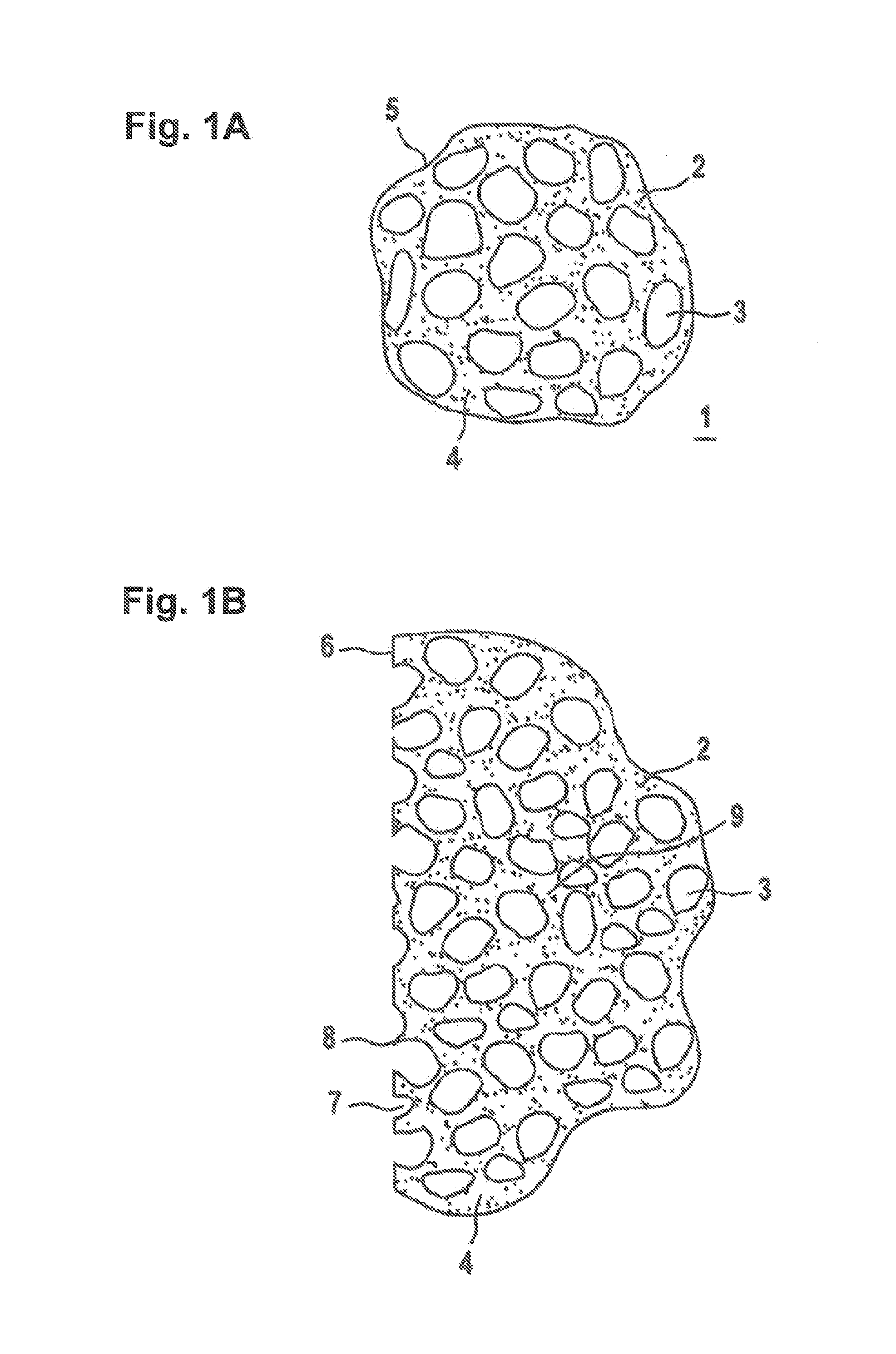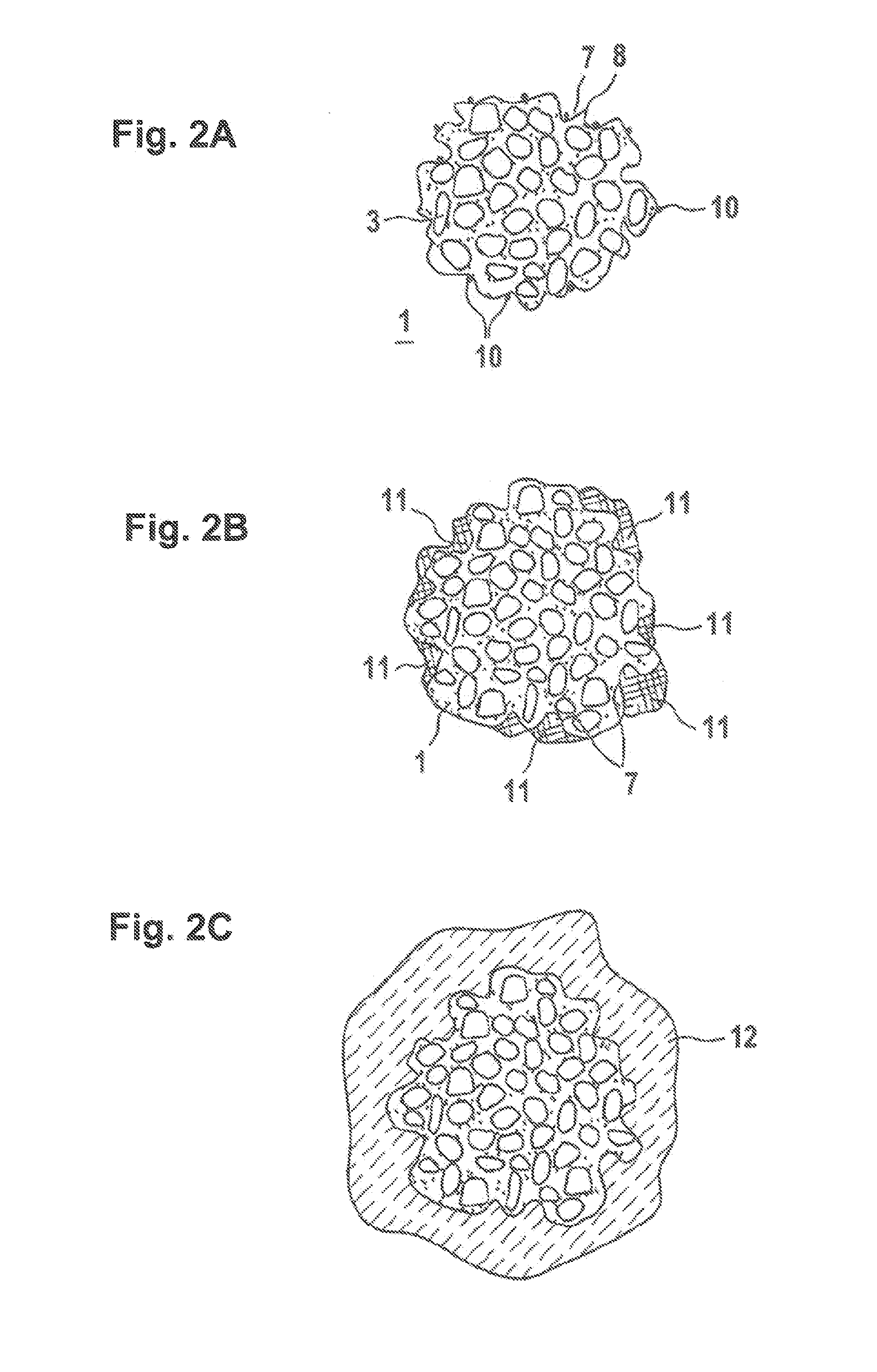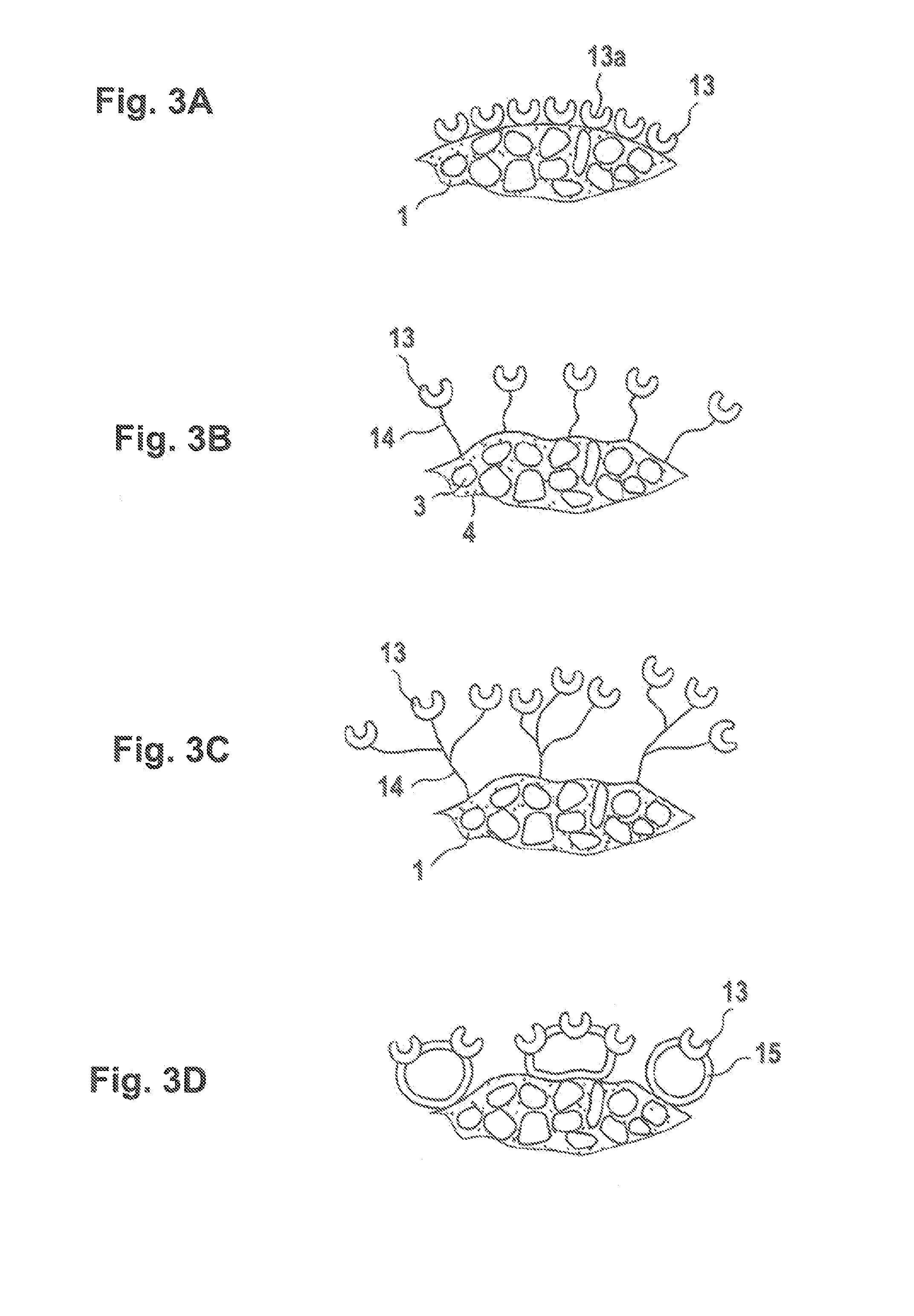Magnetic glass particles for use in biogas plants, fermentation and separation processes
a biogas plant and magnetic glass technology, applied in glass making apparatus, inorganic carrier, manufacturing tools, etc., can solve the problems of limiting the capacity of the reactor, the loss of microorganisms discharged with the spent substrate, and the quantity of fed organic substrate can no longer compensate the loss of renewable quantity of microorganisms, etc., to achieve high water content, rapid separation, and sufficient mobility of magnetizable aggregates
- Summary
- Abstract
- Description
- Claims
- Application Information
AI Technical Summary
Benefits of technology
Problems solved by technology
Method used
Image
Examples
example 1
Production of Magnetizable Glass Particles
Method Variant 1
[0245]A first method variant for the production of magnetic glass particles provides the following production routine on a laboratory scale:
The following starting materials are used:
glass powder from ground recycled glass: 8028 g
γ-Fe2O3 pigment Bayoxide® EAB 21: 1972 g.
[0246]These starting materials are pre-mixed dry in a mixer and then ground.
[0247]Such pigments are marketed for example by Lanxess. The material
[0248]Bayoxide® EAB21 represents an example of the γ-iron oxide pigment indicated. The material Bayoxide© E 7810 represents an example of a magnetite pigment.
[0249]The following are mixed wet as second pre-mixture:
water glass: 1864 g
water: 1480 g
sodium nitrate (blowing agent): 76 g.
[0250]The two pre-mixtures are completely granulated in a Lodige ploughshare mixer for 60 seconds. The produced foam glass-granular material green bodies are then dried at a temperature of 105° C. in an oven for several hours.
[0251]The dried...
example 2
Separation Tests with Uncolonized Magnetizable Support Particles
[0272]The equipment shown in FIG. 4 was used to carry out the separation tests.
[0273]A substrate mixture is placed in an agitated tank reactor 22 equipped with a heater 23 and a stirrer 24. Magnetizable supports on which microorganisms have grown are suspended in the substrate mixture. The substrate mixture is discharged out of the reactor via an outlet 25 and transferred via line 26 into a magnetic separator 27. A magnetic separation device 28, for example a rod-shaped magnet, is arranged in the magnetic separator 27. While the substrate mixture is passed through the magnetic separator 27, the magnetizable supports are deposited on the magnetic separation device 28. The substrate depleted of the magnetizable support particles is then passed via a line 29 to a reservoir 30. From the reservoir 30 the substrate can be returned again via line 31 to the agitated tank reactor 22.
[0274]The magnetizable supports deposited on t...
example 3
Fermentation of Beet Silage in 50-Litre Fermenters with the Aid of Magnetizable Support Particles
[0311]In order to clarify whether the fermentation of beet silage to biogas can be increased by using microorganisms immobilized on magnetizable support particles, two identically constructed agitated tank fermenters which differed in only two features were operated in parallel with an operating volume of 50 litres each. At the start of the test, 1 percent by mass magnetizable support particles was added to the “magnetic fermenter” (hereafter abbreviated to MF). In order to be able to separate the magnetizable support particles out of the discharge again and recycle it, a magnetic separator was incorporated into the MF outlet. No magnetizable support particles were added to the “control fermenter” (hereafter abbreviated to MFC) and no magnetic separator was installed in its outlet. The operating method of both fermenters was, so far as possible, designed to be identical during the approx...
PUM
| Property | Measurement | Unit |
|---|---|---|
| density | aaaaa | aaaaa |
| diameter | aaaaa | aaaaa |
| diameter | aaaaa | aaaaa |
Abstract
Description
Claims
Application Information
 Login to View More
Login to View More - R&D
- Intellectual Property
- Life Sciences
- Materials
- Tech Scout
- Unparalleled Data Quality
- Higher Quality Content
- 60% Fewer Hallucinations
Browse by: Latest US Patents, China's latest patents, Technical Efficacy Thesaurus, Application Domain, Technology Topic, Popular Technical Reports.
© 2025 PatSnap. All rights reserved.Legal|Privacy policy|Modern Slavery Act Transparency Statement|Sitemap|About US| Contact US: help@patsnap.com



